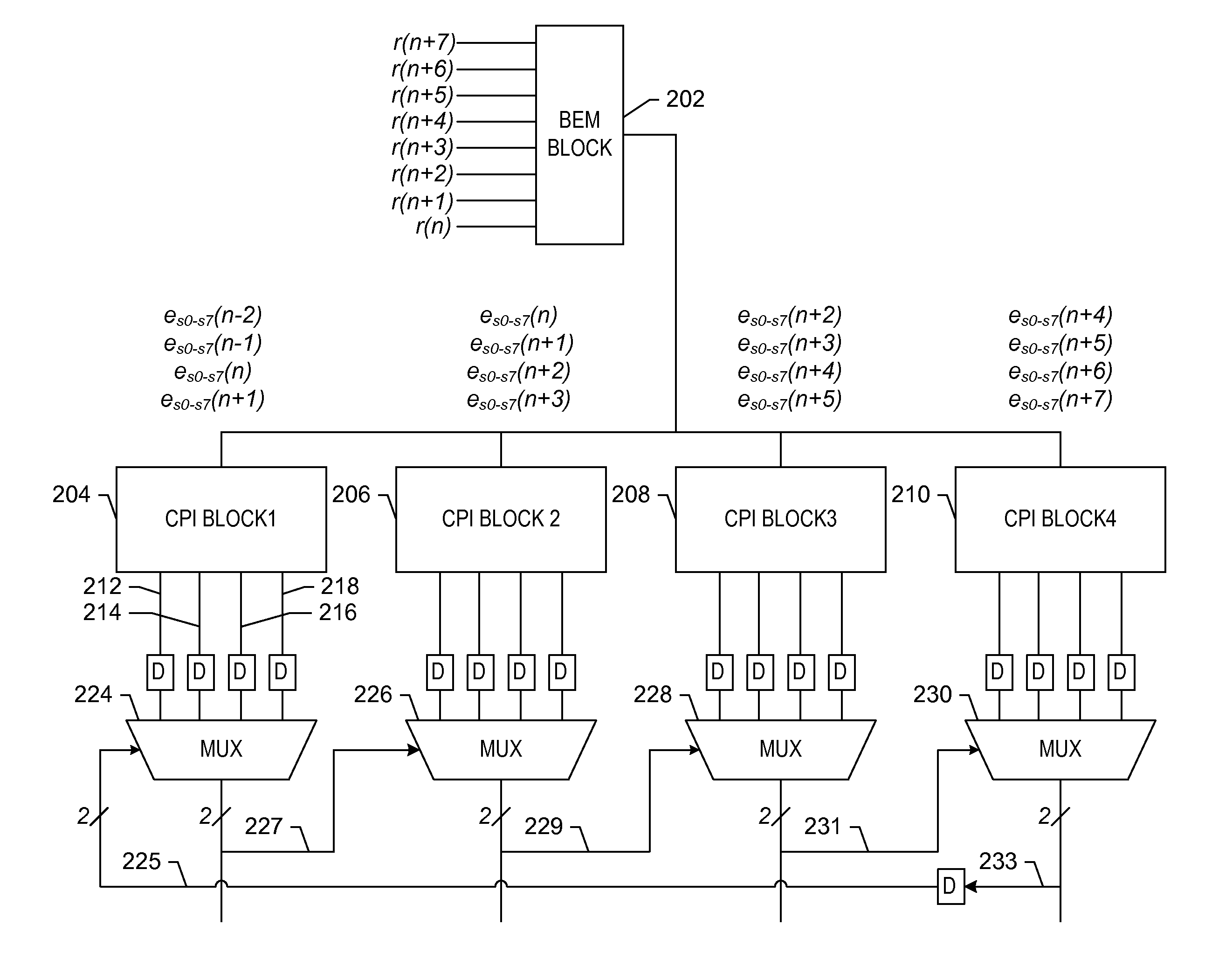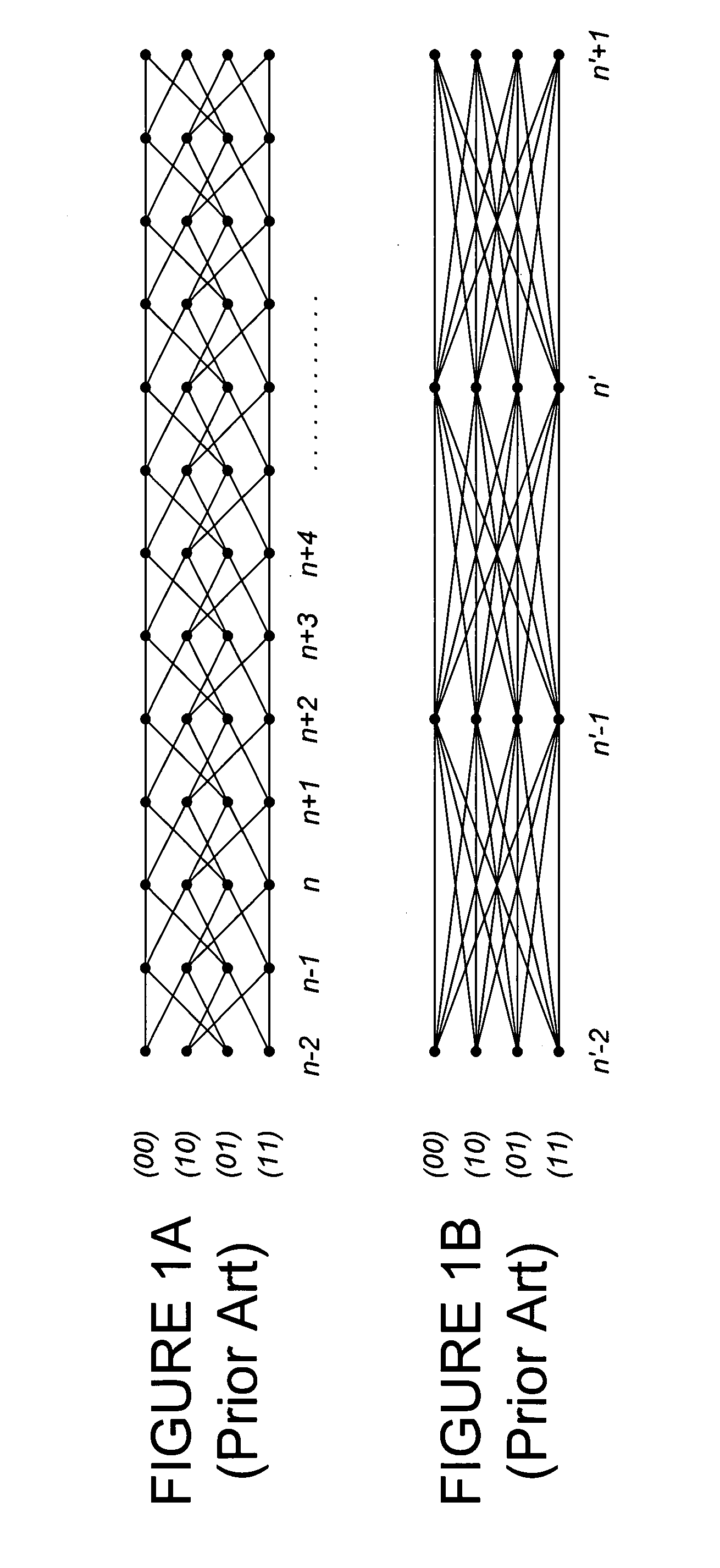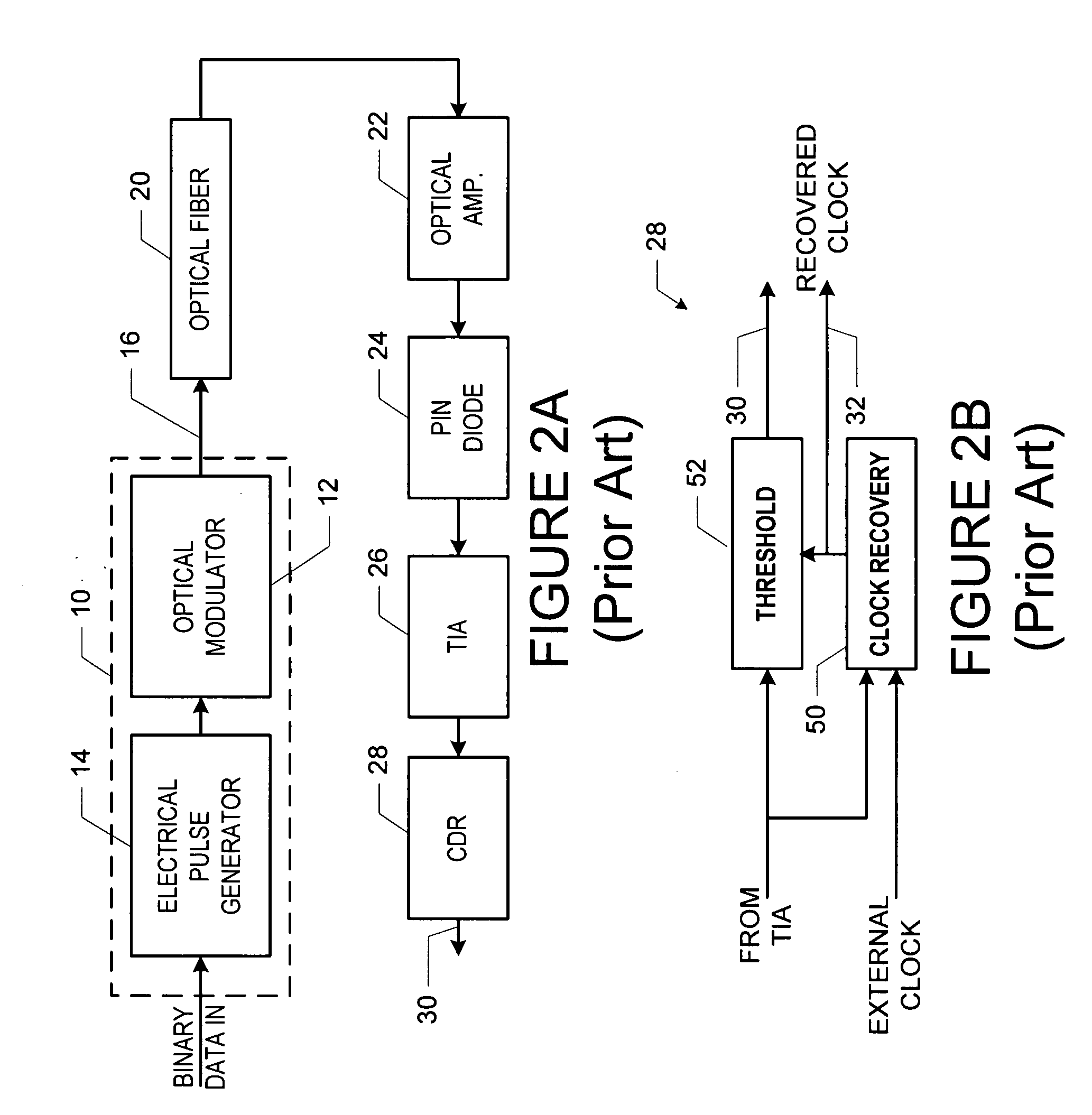Method and apparatus for delayed recursion decoder
a delay decoder and recursion technology, applied in the field of signal processing devices and methods, can solve the problems of increasing the size, complexity and cost of the decoder, imposing an even greater decoding delay, and long critical path, so as to increase parallelization, accelerate clock rate, and increase the rate
- Summary
- Abstract
- Description
- Claims
- Application Information
AI Technical Summary
Benefits of technology
Problems solved by technology
Method used
Image
Examples
Embodiment Construction
[0045]A preferred embodiment of the decoder is shown as part of a receiver architecture in the block diagram of FIG. 3. In addition to the clock recovery circuit 60 (typically a phase locked loop, or PLL) that recovers the clock information from the data signal, the decoder includes an analog-to-digital (A / D) converter 62 that obtains a digital representation of the TIA output or other data signal output device at the sampling instance specified by the clock recovery circuit 60. This digital signal is then processed by the decoder described herein, which acts as part of an equalizer 64 to determine the transmitted bit sequence. Note that the clock recovery circuit 60 and the A / D 62 form the analog components of the receiver and the equalizer 64 is the digital component. The performance of the decoder acting as an equalizer 64 as shown in FIG. 3 depends on the resolution of the A / D converter 62, the type of dispersive impairment, the algorithm employed, and the effectiveness of the c...
PUM
 Login to View More
Login to View More Abstract
Description
Claims
Application Information
 Login to View More
Login to View More - R&D
- Intellectual Property
- Life Sciences
- Materials
- Tech Scout
- Unparalleled Data Quality
- Higher Quality Content
- 60% Fewer Hallucinations
Browse by: Latest US Patents, China's latest patents, Technical Efficacy Thesaurus, Application Domain, Technology Topic, Popular Technical Reports.
© 2025 PatSnap. All rights reserved.Legal|Privacy policy|Modern Slavery Act Transparency Statement|Sitemap|About US| Contact US: help@patsnap.com



